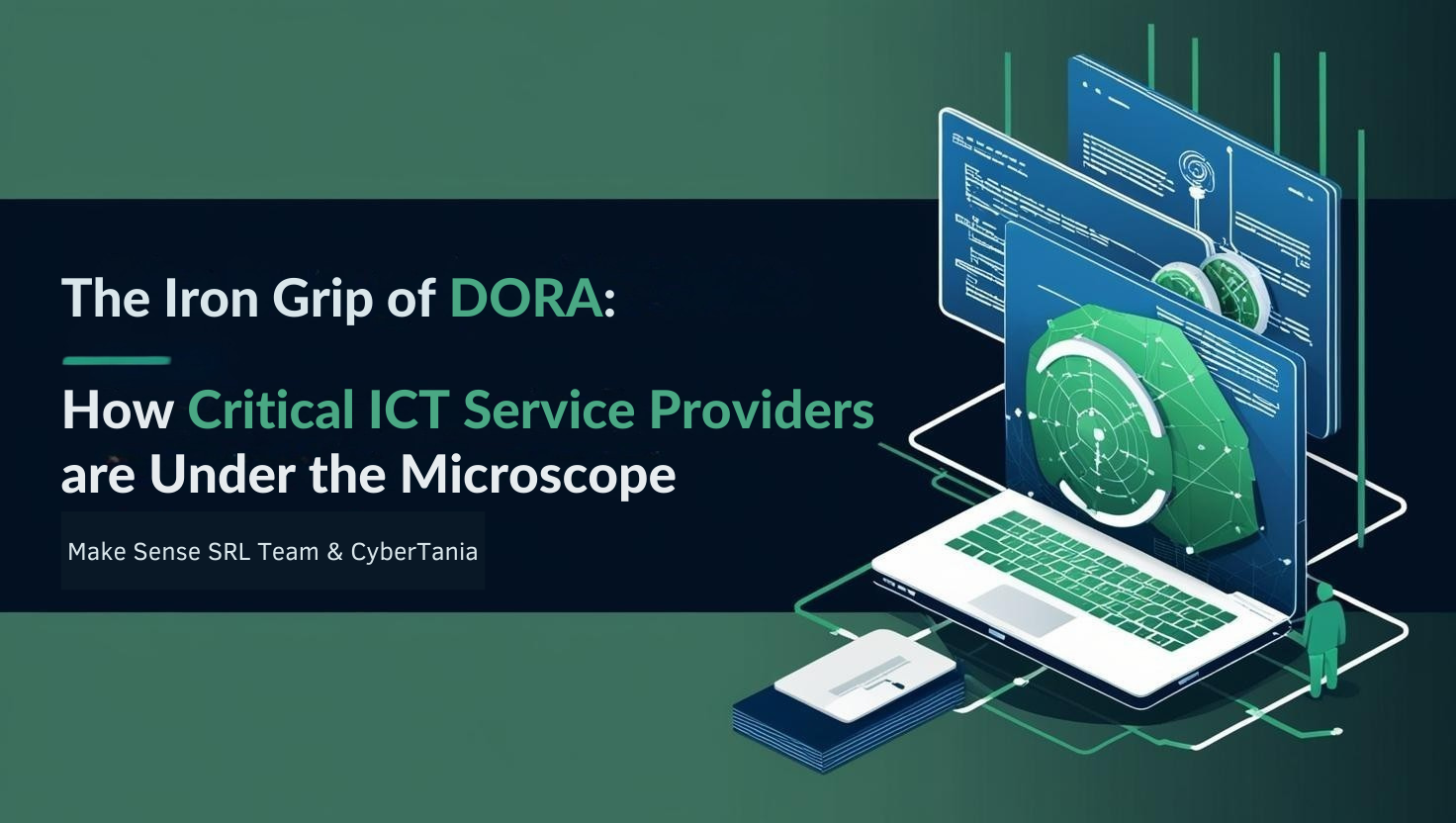
The Iron Grip of DORA: How Critical ICT Service Providers Are Under the Microscope
Posted on March 7, 2025
In the fast-evolving world of financial services, the Digital Operational Resilience Act (DORA) introduces a new regulatory heavyweight: the Critical ICT Third-Party Service Provider (CTPP). But what qualifies an ICT service provider for this designation, and what oversight do they face? Let’s explore DORA’s strict framework, including how providers are designated, the scrutiny they endure, and the powerful role of the Lead Overseer.
How an ICT Service Provider Becomes “Critical”
Not every ICT service provider receives the “critical” status. DORA enforces a rigorous two-step assessment to determine which providers fall under this category:
i. Quantitative Assessment: The Numbers Game
A service provider must meet certain numerical thresholds to be considered critical:
- Essential to the Financial Sector – The provider must deliver ICT services supporting critical functions for financial entities, with at least 10% of a specific sector within the EU relying on their services.
- Difficult to Replace – If at least 10% of customers struggle to switch to an alternative provider due to technical complexities, integration barriers, or market limitations, they edge closer to the critical designation.
ii. Qualitative Assessment: Beyond the Numbers
Beyond the raw metrics, regulators evaluate:
- Impact of Service Disruption – Would downtime lead to system-wide failures?
- Dependency Chains – Are multiple financial entities indirectly dependent on the same subcontractors through this provider?
- Market Dominance – Does the provider hold a near-monopoly in a key tech area, limiting alternatives?
Providers that meet all these criteria are officially designated as “critical” by EU regulators. With this status comes a new level of regulatory scrutiny.
Oversight: Keeping Critical Providers in Check
Once an ICT service provider is labeled critical, they face continuous oversight from regulators. DORA ensures they remain under strict surveillance through an elaborate supervision structure.
The Lead Overseer: The Regulatory Watchdog
A designated European Supervisory Authority (ESA)—either the European Banking Authority (EBA), the European Securities and Markets Authority (ESMA), or the European Insurance and Occupational Pensions Authority (EIOPA)—acts as the Lead Overseer. This entity is tasked with overseeing the CTPP’s compliance and operational resilience.
i. Oversight Plan: A Tailored Compliance Framework
The Lead Overseer creates a custom oversight plan, which examines:
- Cybersecurity resilience and ICT security protocols
- Risk management and data governance policies
- Incident detection, response, and reporting mechanisms
- Service continuity and disaster recovery preparedness
ii. Regulatory Authority: Unprecedented Access
The Lead Overseer has extensive powers, including:
- Accessing Internal Records – Reviewing security audits and risk management frameworks.
- Conducting Investigations – Holding discussions (or interrogations) with company executives.
- Monitoring Communications – Examining internal communication (telephone and data traffic) logs if necessary.
For ICT providers under DORA, regulatory transparency is no longer optional—it’s mandatory.
The Lead Overseer’s Power: Compliance is Non-Negotiable
The Lead Overseer isn’t just a symbolic role. They wield significant regulatory power to ensure compliance:
i. Regulatory Inspections & Enforcement
- Investigative Authority – From off-site reviews to on-site inspections, they verify compliance rigorously.
- Subcontracting Scrutiny – Providers planning to outsource must obtain approval, particularly for third-country vendors that pose security risks.
ii. Sanctions and Penalties: Enforcing the Rules
If a CTPP fails to comply, the Lead Overseer can:
- Issue Compliance Orders – Mandating necessary corrective actions.
- Suspend Services – Halting operations temporarily until compliance is restored.
- Recommend Financial Penalties – While enforcement is typically carried out by National Competent Authorities (NCAs), the Lead Overseer plays a key role in penalty recommendations.
Collaboration with National Authorities: A Tag-Team Effort
The Lead Overseer doesn’t operate in isolation. They work closely with NCAs to maintain a unified regulatory front. Their collaboration includes:
- Information Exchange – Regular updates ensure a coordinated regulatory approach.
- Joint Inspections – The Lead Overseer can team up with NCAs for joint investigations into a provider’s operations.
For service providers hoping to exploit regulatory gaps, there’s bad news—NCAs and the Lead Overseer work together seamlessly, leaving no room for inconsistencies.
What About Non-Critical Service Providers?
If a service provider doesn’t qualify as “critical,” does that mean they’re off the regulatory radar? Not quite.
National Authorities Still Enforce Compliance
While non-critical providers do not fall under the Lead Overseer’s jurisdiction, they must still adhere to strict security and risk management requirements enforced by NCAs.
Financial entities are responsible for ensuring all their ICT service providers—critical or not—comply with DORA’s resilience mandates.
Bottom line? You don’t have to be “critical” to be held accountable under DORA.
Other Key Considerations Under DORA
Here’re a few more interesting considerations in DORA’s oversight framework:
Voluntary Critical Designation: A Prestige Badge?
Some service providers may opt-in to be labeled as critical. This voluntary designation can serve as a competitive advantage, reassuring clients of their adherence to the highest regulatory standards.
Third-Country Risks: DORA’s Global Reach
DORA’s oversight isn’t confined to the EU. ICT providers based outside the EU are still subject to regulatory scrutiny if:
- They play a significant role in EU financial stability.
- Their services involve cross-border data transfers.
- They have no viable alternatives within the EU.
In other words, offshore providers aren’t exempt from DORA’s reach.
Final Thoughts: DORA Reshapes the ICT Landscape
DORA has elevated ICT service providers from mere vendors to integral players in financial stability. With Lead Overseers wielding significant power, regulatory compliance is now a core business function.
For ICT providers servicing financial entities in the EU, this is the new reality. It’s not just about innovation, efficiency, and uptime anymore—it’s about resilience, scrutiny, and unwavering compliance.
And if you’re designated as “critical”? Welcome to the big leagues—your every move is now under the microscope.
Need to ensure compliance with DORA regulation? Get full access to the DORA Implementation Toolkit to streamline your compliance journey.

